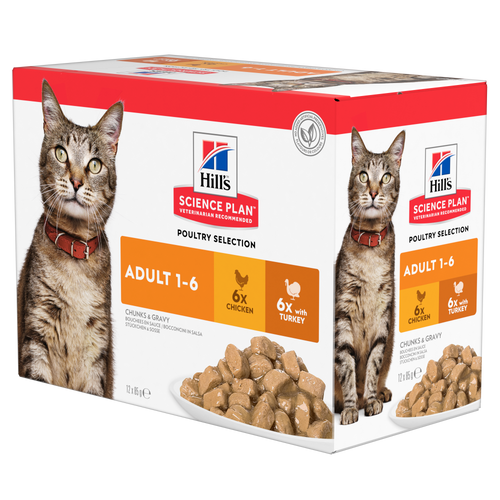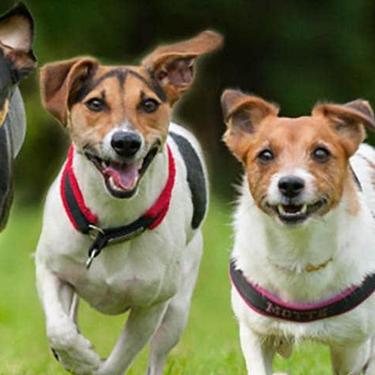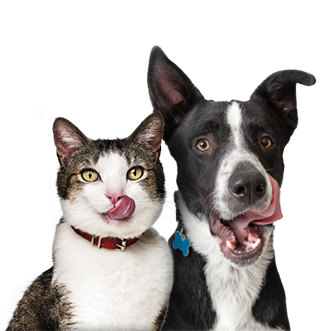
-
Find the right food for your petTake this quiz to see which food may be the best for your furry friend.Find the right food for your petTake this quiz to see which food may be the best for your furry friend.Featured products
 Mature Adult Dog Food
Mature Adult Dog FoodHill's Science Plan Mature Adult Multipack Wet Dog Food with Chicken & Beef are complete premium pet foods for mature adult dogs from 7 years. Your dog will love these deliciously smooth and savoury minced loaves, formulated to deliver the appropriate amount of energy to support the needs of adult dogs.
Shop Now Adult Wet Dog Food with Beef
Adult Wet Dog Food with BeefHill's Science Plan Adult Multipack Wet Dog Food with Chicken, Beef & Turkey are complete premium pet foods for adult dogs from 1 year. Your dog will love these deliciously smooth and savoury minced loaves, formulated for balanced nutrition and overall health.
Shop Now Puppy Food
Puppy FoodHill's Science Plan Puppy Multipack Wet Dog Food with Chicken & Beef are complete premium pet foods for growing puppies from weaning until 1 year old and for pregnant and nursing dogs. Your puppy will love these deliciously smooth and savoury minced loaves, formulated for balanced nutrition and overall health.
Shop NowFeatured products Mature Adult Wet Cat Food with Chicken
Mature Adult Wet Cat Food with Chicken
Tender chicken chunks in gravy for mature adult cats. Made with easy-to-digest ingredients, high-quality protein for lean muscle maintenance and antioxidant vitamins C+E for optimal health.
Shop Now Adult Multipack Wet Cat Food with Beef, Ocean Fish & Chicken
Adult Multipack Wet Cat Food with Beef, Ocean Fish & ChickenTender chunks in gravy for cats, with high-quality protein to maintain lean muscle. With vitamin E and omega-3s & -6s for healthy skin and balanced minerals to support healthy vital organs.
Shop Now Light Adult Multipack Wet Cat Food with Chicken & Ocean Fish
Light Adult Multipack Wet Cat Food with Chicken & Ocean FishTender chicken chunks in gravy for cats, with L-carnitine and fewer calories for ideal weight management. Packed with high-quality protein, omega-6s, and vitamin E for shiny fur and healthy skin.
Shop Now -
Dog
- Dog Tips & Articles
-
Health Category
- Weight
- Food & Environmental Sensitivities
- Urinary
- Digestive
- Joint
- Kidney
-
Life Stage
- Puppy Nutrition
- Adult Nutrition
- Senior Nutrition
Cat- Cat Tips & Articles
-
Health Category
- Weight
- Skin & Food Sensitivities
- Urinary
- Digestive
- Kidney
-
Life Stage
- Kitten Nutrition
- Adult Nutrition
Featured articles Show some love with wet foods: a great choice for pets with health issues
Show some love with wet foods: a great choice for pets with health issuesShow some love with wet foods: a great choice for pets with health issues.
Read More The Right Diet For Your Pet
The Right Diet For Your PetIn people, the right diet is very important. If you are eating the wrong way for your metabolism, activity level, age and lifestyle you could end up with health issues.
Read More The Incredible Science Behind Your Pet's Microbiome
The Incredible Science Behind Your Pet's MicrobiomeLearn what your pet's microbiome is, how it contributes to your pet's gut and overall health, and why nutrition is important in maintaining healthy microbiomes.
Read More -


All of us pet owners know the feeling of dread when you hear the retching noises start and drop everything to try to rush our cat or dog out of the house or off the bed before the inevitable happens! Seeing your pet have vomiting and diarrhoea is unpleasant to say the least but it’s also very worrying. Lots of owners wonder what makes their cat or dog sick or have diarrhoea and what they can do about it once it starts. Let’s start with the most common causes;
What causes vomiting and diarrhoea in cats and dogs?
Just like with humans, most cases of vomiting and diarrhoea are short-lived and we never find a cause because they get better and don’t need a lengthy investigation. What we call ‘dietary indiscretions’ are one of the most common causes. This is really just a fancy way of saying that your cat or dog has found something pretty unsavoury and gobbled it up. This could be dogs stealing carcasses out of the bin or cats catching an animal and eating it that doesn’t go down too well. Dogs particularly have a liking for rotting things, other animals’ poo, their own poo and so on! Of course sometimes these don’t go down too well and vomiting and /or diarrhoea set in. Often we see the vomiting first and as the trouble works its way through the bowel the diarrhoea starts a day or two later as the vomiting starts to subside. Other possible causes of vomiting and diarrhoea are;
- Viral infections such as parvovirus (a good reason to make sure your pet is fully vaccinated throughout its life).
- Parasites such as worms or Giardia.
- Foreign bodies such as socks, stones, wool. You would be amazed at what some animals will eat!
- Poisons or food that is poisonous to animals but not to us. The classic things would be chocolate for dogs but there are many other foods like xylitol, garlic, onions and raisins too.
- Raw meat and bones. The current trend for raw feeding carries significant risks for intestinal infections like Salmonella, Campylobacter and E.coli.
- Organ problems like liver or kidney disease or pancreatitis.
- Various types of cancer.
- Some endocrine diseases like Addison’s disease.
- Bowel obstructions.
- Chronic enteropathies
This list is not exhaustive so it’s important to know what to do if your cat or dog has vomiting or diarrhoea and when to go to the vet.


Tasty Tips
Young pets may need several visits in their first year for vaccinations. Adult pets generally benefit from annual check-ups, while senior or special-needs pets might require more frequent visits.
What to do if your cat or dog has vomiting or diarrhoea.
Firstly, don’t panic. The vast majority of cases are not serious and will normally pass in a day or two. If you are in the slightest bit worried please do ring your vet. They would rather be safe than sorry and can ask you in depth questions about how it started and any other signs etc. This way you can decide between you if your pet needs to be seen. Offering bland food, little and often can help and you may find this easiest to do by asking your vet to give you something to use for a few days.
When to go to the vet.
If the signs don’t pass within a day or two the underlying cause needs to be found but there are some situations where you shouldn’t wait and you need to get help straight away;
- If you know your pet has eaten something toxic or raided the bin.
- If vomiting is very frequent your pet may become dangerously dehydrated.
- If your dog is trying to be sick but can’t or starts to swell up.
- If you see blood in either the vomit or the diarrhoea.
- If your animal is bright and eating but vomits or regurgitates soon afterwards.
- If your pet seems ill or depressed or collapsed.
- If your dog is doing a ‘play-bow’ posture this can be a sign of severe pain and possible pancreatitis.
The bottom line, as I often say, is that you are never time-wasting if you’re concerned about your pet’s health. If you are ever unsure, contact your vet. That’s why we are here.


One of our staff authors prepared this article for you
Related products

Tender chunks in gravy for cats, with high-quality protein to maintain lean muscle. With vitamin E and omega-3s & -6s for healthy skin and balanced minerals to support healthy vital organs.

Tender chicken chunks in gravy for mature adult cats. Made with easy-to-digest ingredients, high-quality protein for lean muscle maintenance and antioxidant vitamins C+E for optimal health.

Tender chicken chunks in gravy for cats, with L-carnitine and fewer calories for ideal weight management. Packed with high-quality protein, omega-6s, and vitamin E for shiny fur and healthy skin.

Related articles

Learn what your pet's microbiome is, how it contributes to your pet's gut and overall health, and why nutrition is important in maintaining healthy microbiomes.

To make a protein, amino acids are linked together in a long chain. The chain is then bundled into to a three-dimensional structure, like a tangled ball of yarn.

In people, the right diet is very important. If you are eating the wrong way for your metabolism, activity level, age and lifestyle you could end up with health issues.

Show some love with wet foods: a great choice for pets with health issues.

Put your pet on a diet without them knowing
Our low calorie formula helps you control your pet's weight. It's packed with high-quality protein for building lean muscles, and made with purposeful ingredients for a flavourful, nutritious meal. Clinically proven antioxidants, Vitamin C+E, help promote a healthy immune system.
Put your pet on a diet without them knowing
Our low calorie formula helps you control your pet's weight. It's packed with high-quality protein for building lean muscles, and made with purposeful ingredients for a flavourful, nutritious meal. Clinically proven antioxidants, Vitamin C+E, help promote a healthy immune system.

